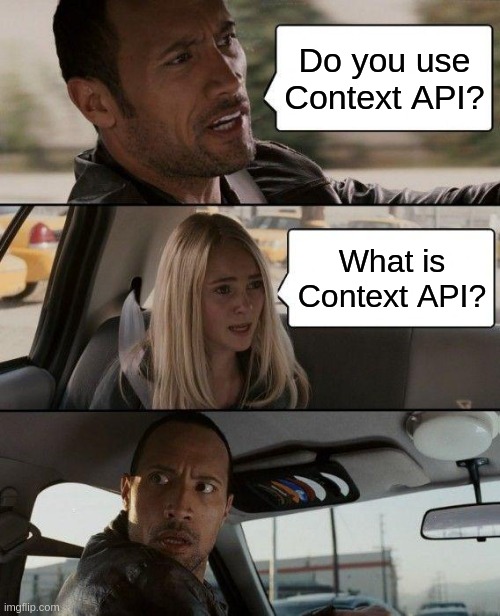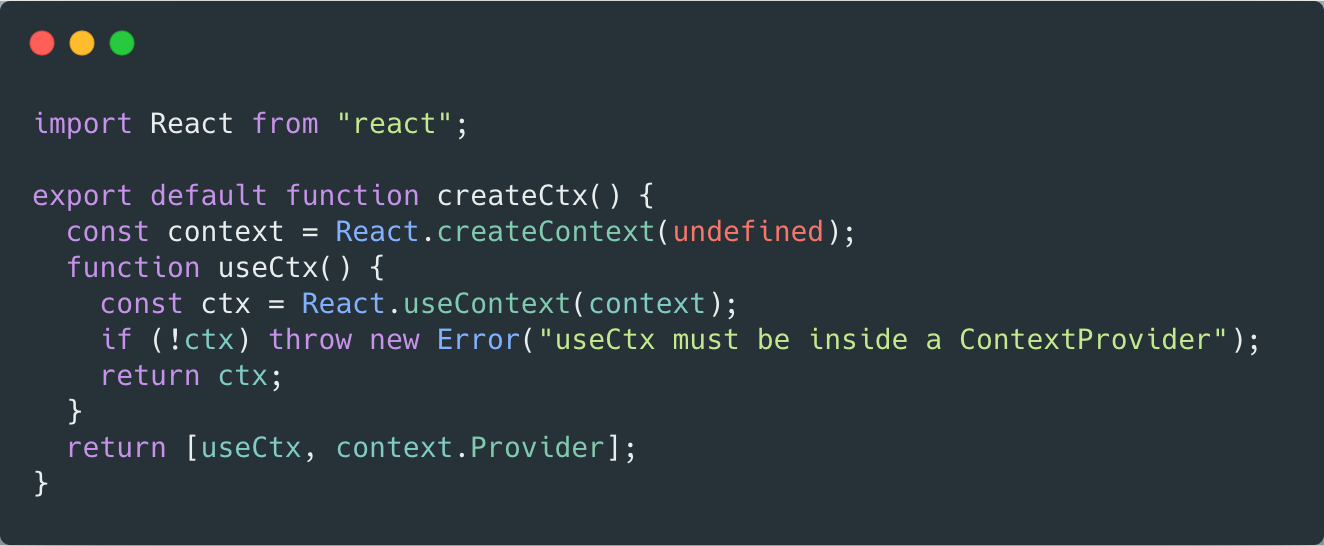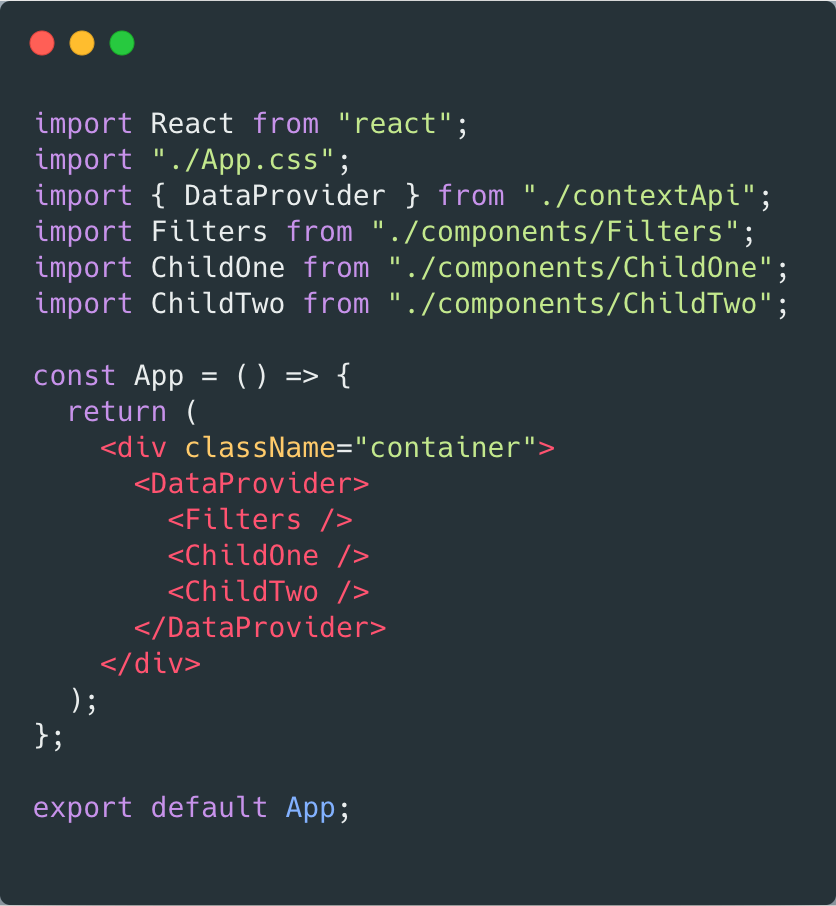Rem Kim - 2020-04-18
Use Context API, avoid Props Drilling

I bet everyone who works with React on day to day basis knows what it "Props Drilling". Passing props down the component tree can become quite a burden. Hers is how Context API can solve that problem!
Props Drilling
Lets look at this example component
As you can see, Dashboard is a sort of a Controller component that manages state using React.useReducer. It passes actions down to child components.
In some cases this is absolutely fine. However as your application grows you may run into a situation when most distant child needs state or an action from root parent component.
<RootParent>
<NestedChild>
<DeeperNestedChild>
< TheDeepestChildThatNeedsState />
</DeeperNestedChild>
</NestedChild>
</RootParent>This is called "Props Drilling". Passing props down the component tree to child that needs it.
As a developer I try to recognize moments like that because maintaining that type of code in the future will be very hard. Thankfully its never too late to refactor! Well, I hope...
Context
Context provides a way to pass data through the component tree without having to pass props down manually at every level.
Now lets see how we can refactor our example to utilize Context API.
First of all lets understand how it works.
You can create Context using React.createContext and pass default value of the context. Once that is done you can wrap your components with ContextProvider, hence making its value available across every child component. Neat right?!
Now let's come back to our example and refactor it using Context API and React Hooks.
Let's clean up and put code in its own files
Actions
Define all actions in actions.js pay attention that it exports function that requires dispatch prop in order to trigger an action and exports function wrapper around dispatch.
Reducers
Corresponding reducers in reducers.js. It contains our initialState and reducers function to handle state updates.
useData hook
Connecting actions and reducers in simple yet elegant hook useData.js that will export state and actions.
useCtx hook
Now lets put utility function that will create context and export useCtx hook and Context Provider in createCtx.js
contextApi.jsx
Here is where all the magic happens contextApi.jsx.
Let's break this one down.
First we create context using createCtx() and export hook useDataContext this will be used in child components to get access to state and actions.
Second we export DataProvider that will wrap child components and utilize our useData hook that will create our state from reducers and actions.
And finally App.jsx
Clean isn't it? No props are being passed to child components.
Here is Filters.js example on how to consume state and grab action from the Context
If you want to play around with example here is the Link
Conclusion
Obviously its up to you how you want to manage state in your application and what state management architecture suits your case. But if you faced "Props Drilling" problem, I think Context API is the way to go!
Email automation for your business
Flows
Build Website for free with
SimplePages
© Rem Kim - Powered by Next.js











